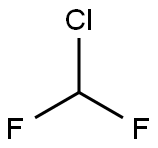Cefaclor monohydrate
- CAS NO.:70356-03-5
- Empirical Formula: C15H16ClN3O5S
- Molecular Weight: 385.82
- MDL number: MFCD00071999
- EINECS: 641-991-5
- SAFETY DATA SHEET (SDS)
- Update Date: 2024-11-19 23:02:33

What is Cefaclor monohydrate?
Description
Cefaclor was found by Eli Lilly & Co. in 1976 in the course of studies on the improvement of synthetic procedures for cephalexin. The intermediates with chlorine at the 3 position of the cephem nucleus have excellent antibacterial activity. Cefaclor was selected from among the various derivatives that differed at the 7 position because of its strong activity and high bioavailability following oral administration.
Chemical properties
Crystalline Solid
The Uses of Cefaclor monohydrate
Second-generation cephalosporin antibiotic. Antibacterial
The Uses of Cefaclor monohydrate
Antibacterial;Bacterial transpeptidase inhibitor
The Uses of Cefaclor monohydrate
Second-generation cephalosporin antibiotic. Antibacterial.
What are the applications of Application
Cefaclor, Monohydrate is a potentially useful antimicrobial agent for in vitro studies of pathogens
brand name
Ceclor (Lilly); Raniclor (Ranbaxy).
Contact allergens
Cefaclor is a semisynthetic cephalosporin antibiotic, related to cefalexin, and a frequent inducer of serum sickness-like reactions.
Properties of Cefaclor monohydrate
| Melting point: | >180°C (dec.) |
| storage temp. | Keep in dark place,Inert atmosphere,2-8°C |
| solubility | Slightly soluble in water, practically insoluble in methanol and in methylene chloride. |
| form | neat |
| form | Solid |
| color | White to Light Beige |
| CAS DataBase Reference | 70356-03-5(CAS DataBase Reference) |
Safety information for Cefaclor monohydrate
| Signal word | Danger |
| Pictogram(s) |
 Health Hazard GHS08 |
| GHS Hazard Statements |
H317:Sensitisation, Skin H334:Sensitisation, respiratory |
| Precautionary Statement Codes |
P261:Avoid breathing dust/fume/gas/mist/vapours/spray. P280:Wear protective gloves/protective clothing/eye protection/face protection. P284:Wear respiratory protection. P304+P340:IF INHALED: Remove victim to fresh air and Keep at rest in a position comfortable for breathing. P333+P313:IF SKIN irritation or rash occurs: Get medical advice/attention. P342+P311:IF experiencing respiratory symptoms: call a POISON CENTER or doctor/physician. |
Computed Descriptors for Cefaclor monohydrate
New Products
(S)-3-Aminobutanenitrile hydrochloride 4-Methylphenylacetic acid N-Boc-D-alaninol N-BOC-D/L-ALANINOL Tert-butyl bis(2-chloroethyl)carbamate 3-Morpholino-1-(4-nitrophenyl)-5,6-dihydropyridin- 2(1H)-one Furan-2,5-Dicarboxylic Acid Tropic acid 1-Bromo-3,5-Di-Tert-Butylbenzene S-2-CHLORO PROPIONIC ACID ETHYL ISOCYANOACETATE 2-Bromo-1,3-Bis(Dimethylamino)Trimethinium Hexafluorophosphate 4-IODO BENZOIC ACID 3-NITRO-2-METHYL ANILINE 1-(2,4-DICHLOROPHENYL) ETHANAMINE (2-Hydroxyphenyl)acetonitrile 4-Bromopyrazole 2-(Cyanocyclohexyl)acetic acid 4-methoxy-3,5-dinitropyridine 1-(4-(aminomethyl)benzyl)urea hydrochloride 2-aminopropyl benzoate hydrochloride diethyl 2-(2-((tertbutoxycarbonyl)amino) ethyl)malonate tert-butyl 4- (ureidomethyl)benzylcarbamate Ethyl-2-chloro((4-methoxyphenyl)hydrazono)acetateRelated products of tetrahydrofuran








You may like
-
 Cefaclor Monohydrate CAS 70356-03-5View Details
Cefaclor Monohydrate CAS 70356-03-5View Details
70356-03-5 -
 Cefaclor CAS 70356-03-5View Details
Cefaclor CAS 70356-03-5View Details
70356-03-5 -
 1975-50-4 98%View Details
1975-50-4 98%View Details
1975-50-4 -
 2-HYDROXY BENZYL ALCOHOL 98%View Details
2-HYDROXY BENZYL ALCOHOL 98%View Details
90-01-7 -
 2-Chloro-1,3-Bis(Dimethylamino)Trimethinium Hexafluorophosphate 221615-75-4 98%View Details
2-Chloro-1,3-Bis(Dimethylamino)Trimethinium Hexafluorophosphate 221615-75-4 98%View Details
221615-75-4 -
 61397-56-6 CIS BROMO BENZOATE 98%View Details
61397-56-6 CIS BROMO BENZOATE 98%View Details
61397-56-6 -
 14714-50-2 (2-Hydroxyphenyl)acetonitrile 98+View Details
14714-50-2 (2-Hydroxyphenyl)acetonitrile 98+View Details
14714-50-2 -
 118753-70-1 98+View Details
118753-70-1 98+View Details
118753-70-1